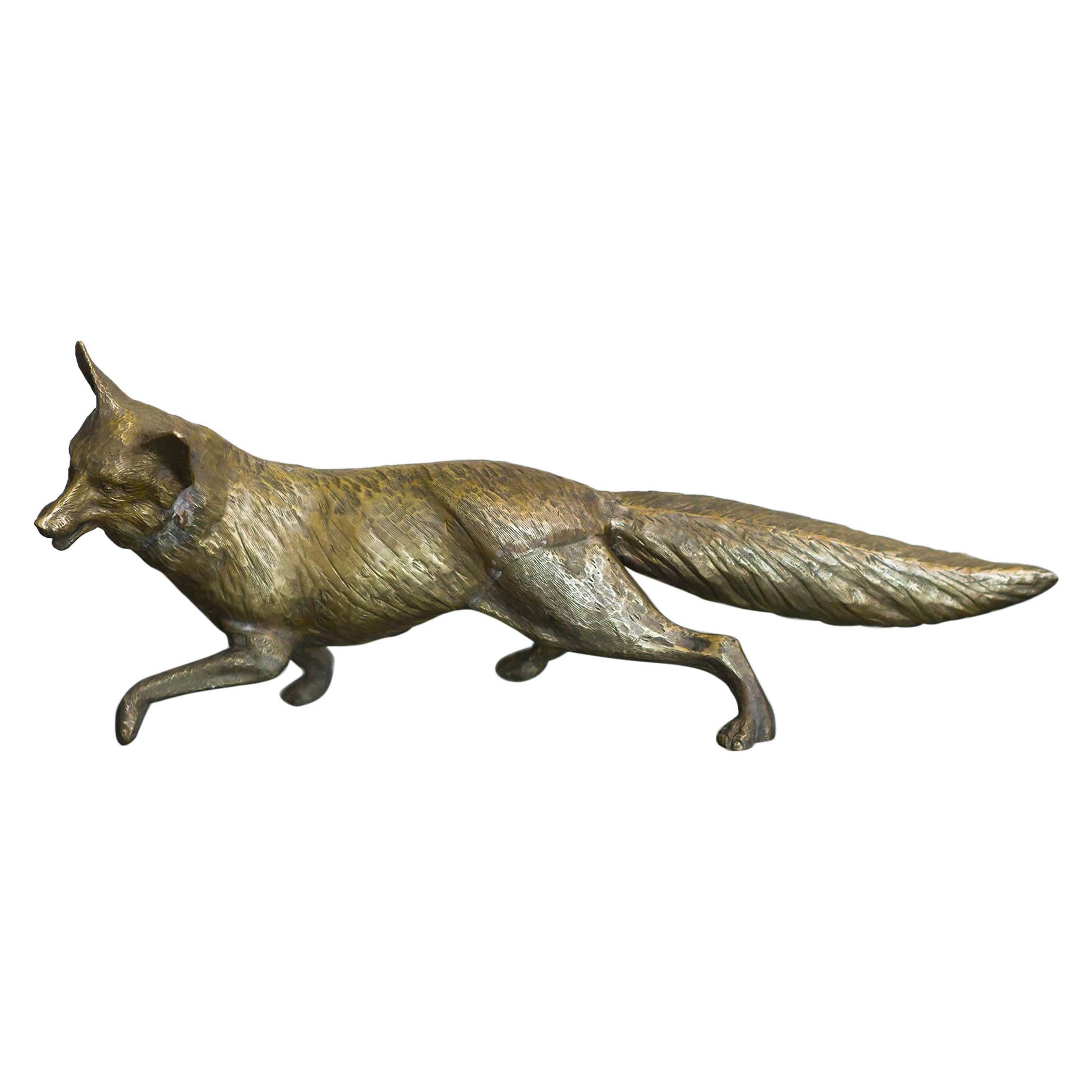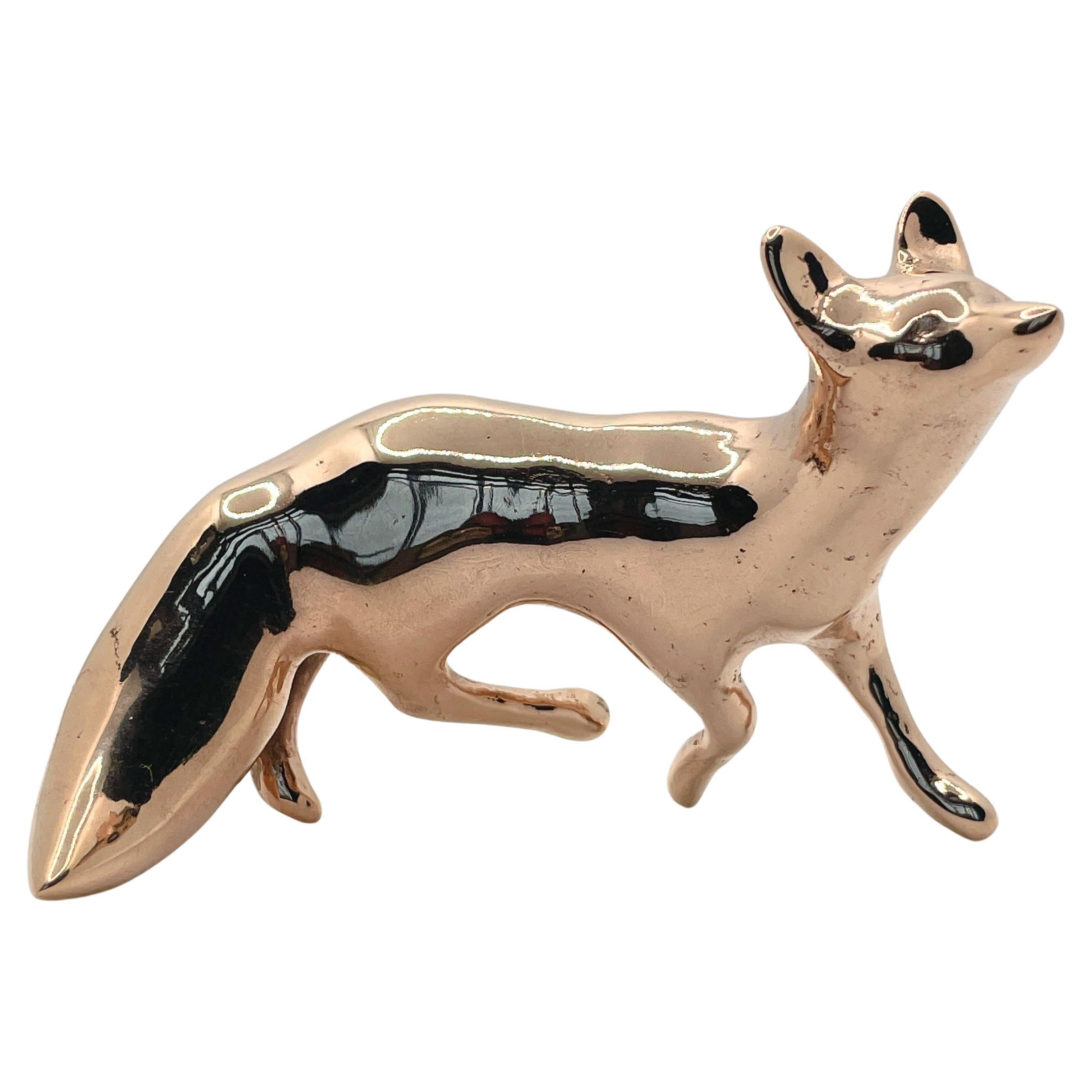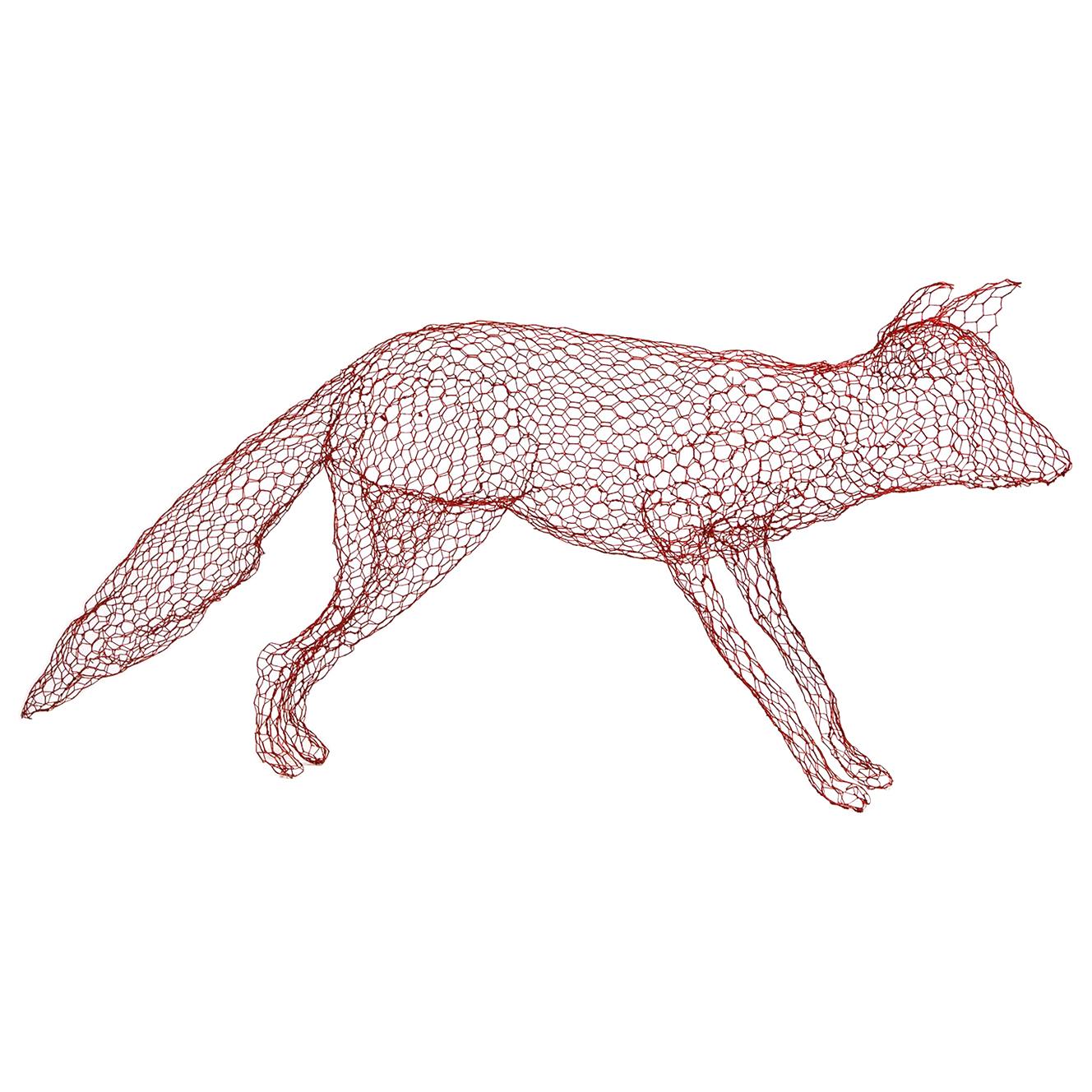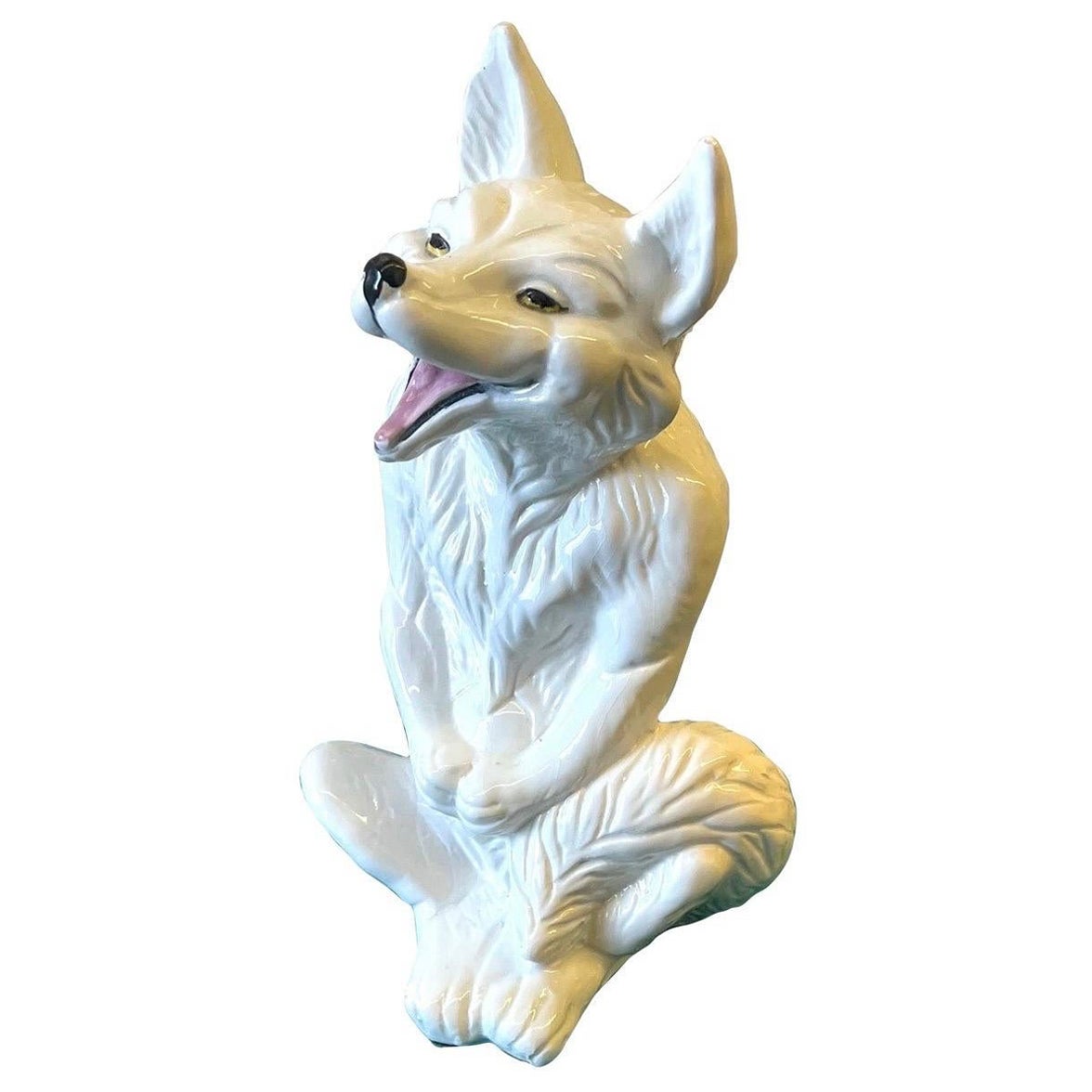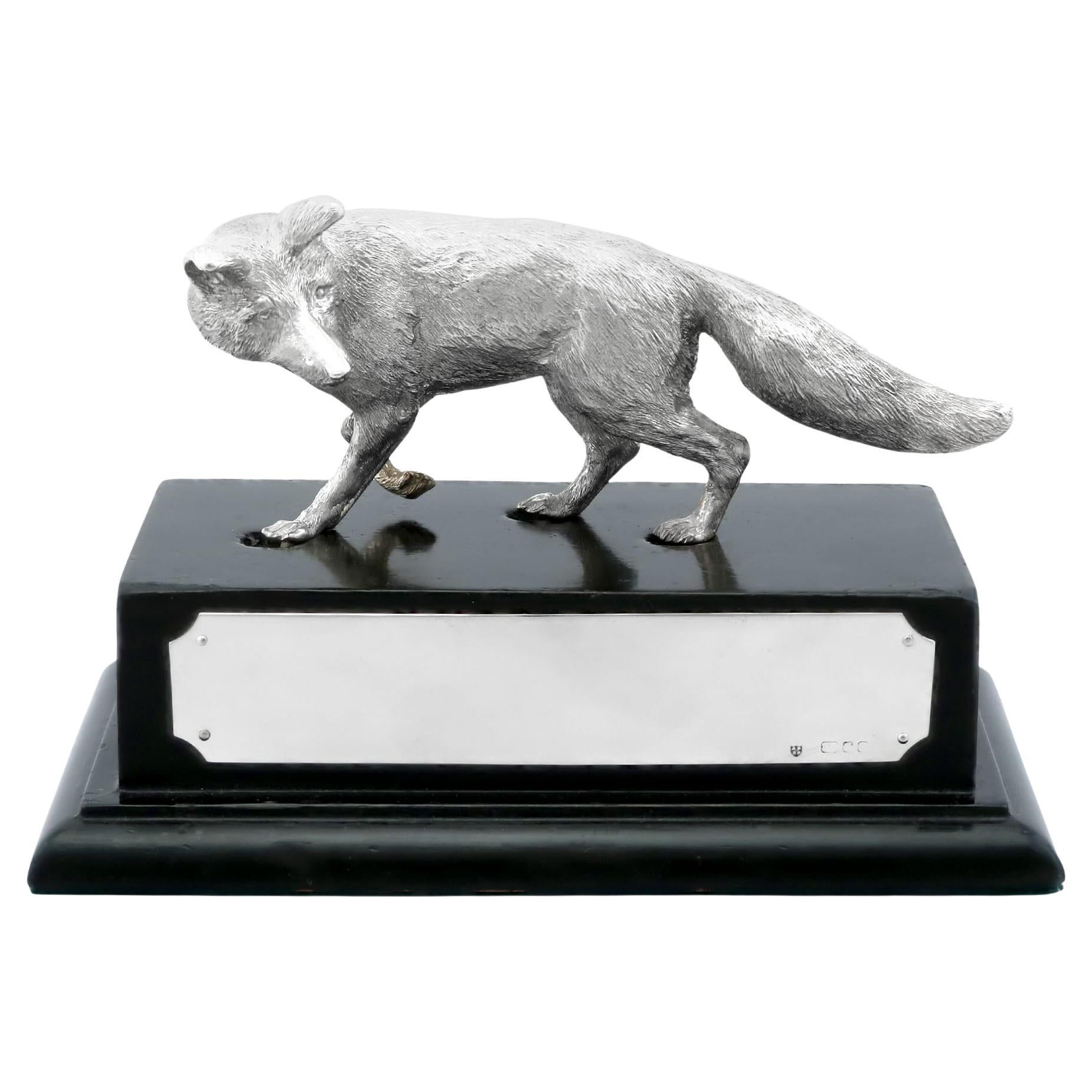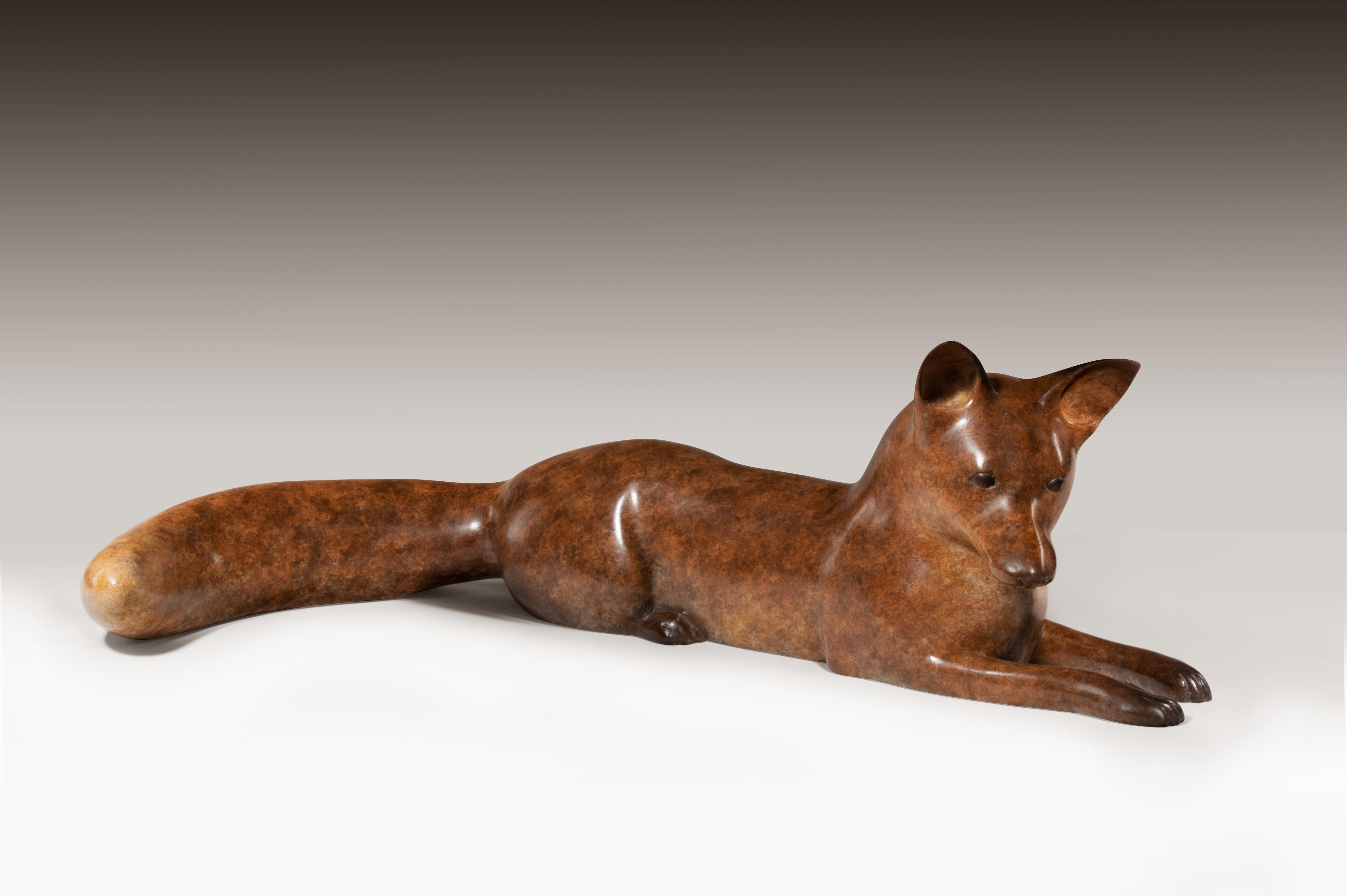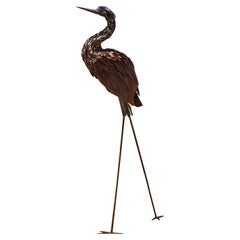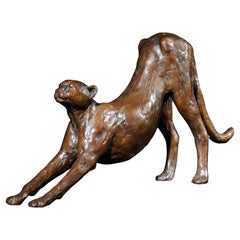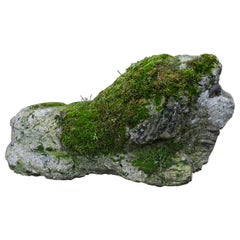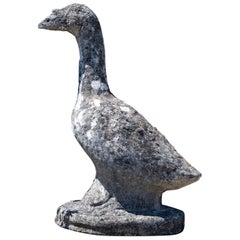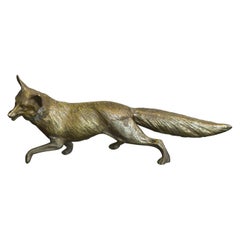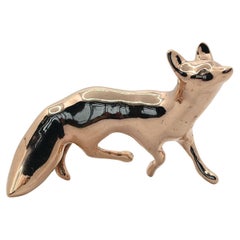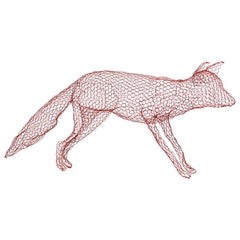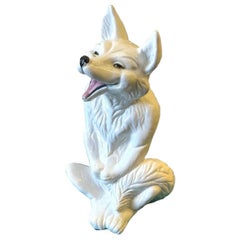Items Similar to Fox Sculpture Wirework Garden `Ornament
Want more images or videos?
Request additional images or videos from the seller
1 of 12
Fox Sculpture Wirework Garden `Ornament
$5,511.26
£4,000
€4,701.75
CA$7,626.21
A$8,407.73
CHF 4,398.65
MX$103,147.17
NOK 55,370.29
SEK 51,779.98
DKK 35,112.82
About the Item
A folk art, life-size, fox, wirework, garden sculpture
Hand-sculpted using multiple layers of painted galvanized wire in red, white and black. Each sculpture is unique. This fox is very realistic and often mistaken for the real thing, creating humour in the landscape.
“These beautiful, life-size, wire-work animals bring charm and character to any garden ..”
This fox can be customised and ordered individually
length 91cm., 3ft height 28cm., 11" depth 15cm., 6"
WIREWORK SCULPTURE
Wirework is an ancient art form, probably first practised by the Egyptians around 3000BC. Early examples have been discovered in the burial chambers of important people throughout the ancient world. In 2600BC, wire was used in gold and silver ribbons for entwining in the hair of courtly ladies in the Sumerian city of Ur. The art of wirework spread in various forms from Babylon to Baghdad, Damascus and Constantinople before finally reaching Europe.
Wire was originally made by chiselling thin strips from a sheet of metal. The strips were either twisted and then rolled between two flat surfaces to smooth them or spirally wound around a mandrel. Today wire is made by drawing rods of metal through conically shaped holes in a draw-plate. This system was first used in Persia in the 6th century BC but did not reach Europe until the 10th century AD when wire was first being produced on a commercial scale.
The iron wire trade made chain-mail, and also wool carders, girdles, chains, fish hooks and needles. Up until this time gold and silver wires were made almost exclusively for jewellery but during the Middle Ages embroidery became their principal use. In England, the two trades were governed by different bodies, the Broiders’ Company and the Girdler and Pinmakers’ Company. It was not until the late 17th century that they became distinctive guilds known as the Worshipful Company of Gold and Silver Wireworkers, and the Worshipful Company of Tin Plate Workers, or Wireworkers.
By the mid-16th century, there were at least 6,000 wire drawers in London alone and it was around this time that the first mechanical drawing machines were used in England. The water-driven draw-plate system used in these machines was invented by Rudolf of Nuremberg in the 14th century, but was not introduced to England until 1564. Gold and silver wirework flourished until the time of the French Revolution (1789-99), when fashions changed and the industry went into decline.
Because of the corrodible nature of iron, very few examples of the broad range of objects once made from iron wire have survived to this day, save the items mentioned above and a few toys and traps. By the early 19th century, tinning and black-japanning had become popular ways of protecting the wireworker’s craft. Not only did these treatments prevent rusting, they also helped cement items made from unsoldered wire.
America imported its wire from England and Germany until 1812, when the war with England meant that supplies were cut off. From this point, the Americans started building their own factories for producing wire. By the mid-19th century, the steam engine enabled wire, woven wire and wire fencing to be mass produced. The industry flourished, reaching its peak in Europe and America at the turn of the century, when an impressive range of products was available, from wire whisks and baskets to wire gazebos. The craft of wireworking was applied to every possible household device until the advent of plastic gradually led to its demise.
Alexander Calder (1898-1976) was the first artist who brought wire sculpture art to people's attention was Alexander Calder (, who made a series of wire sculptures in the 1920s after using wire to experiment with jewelry making. The artistic practice of wirework is now enjoying a renaissance in the fine and decorative arts.
- Dimensions:Height: 11.03 in (28 cm)Width: 35.83 in (91 cm)Depth: 5.91 in (15 cm)
- Materials and Techniques:
- Place of Origin:
- Period:
- Date of Manufacture:2020
- Production Type:New & Custom(One of a Kind)
- Estimated Production Time:12-13 weeks
- Condition:
- Seller Location:BUNGAY, GB
- Reference Number:1stDibs: LU3867332094152
different pose and colouring
About the Seller
5.0
Vetted Professional Seller
Every seller passes strict standards for authenticity and reliability
Established in 1985
1stDibs seller since 2018
99 sales on 1stDibs
Typical response time: 9 hours
- ShippingRetrieving quote...Shipping from: BUNGAY, United Kingdom
- Return Policy
Authenticity Guarantee
In the unlikely event there’s an issue with an item’s authenticity, contact us within 1 year for a full refund. DetailsMoney-Back Guarantee
If your item is not as described, is damaged in transit, or does not arrive, contact us within 7 days for a full refund. Details24-Hour Cancellation
You have a 24-hour grace period in which to reconsider your purchase, with no questions asked.Vetted Professional Sellers
Our world-class sellers must adhere to strict standards for service and quality, maintaining the integrity of our listings.Price-Match Guarantee
If you find that a seller listed the same item for a lower price elsewhere, we’ll match it.Trusted Global Delivery
Our best-in-class carrier network provides specialized shipping options worldwide, including custom delivery.More From This Seller
View AllSculpture Lifesize Crane Heron Wrought Iron
Located in BUNGAY, SUFFOLK
Realistic wrought iron life size, sculpture of a wading crane or large heron
Stylish feature in the garden, pond, river, lake or home
Measures: height ...
Category
20th Century English Animal Sculptures
Materials
Wrought Iron
Cheetah Stretching Ingwe FoundryS31 Bronze Sculpture Maquette 3/15 Monogram BMR
Located in BUNGAY, SUFFOLK
Bronze study of a stretching cheetah.
RHS under the belly bearing Ingwe Foundry stamp, ‘S31’ or ‘S3I’, Edition 3/15, monogram BMR.
Artist unknown.
I have been unsuccessfully resarching who the artist could be.
The stretching pose of the cheetah is contemplative with a graceful, ease and content expression suggesting its attunement and hierarchy within the landscape and the animal world. Its power is conveyed with a noble quality in the pose, the sleek form and the sinewy musculature.
Beautifully handworked with rich brown patina.
Almost certainly inspired by the work of Dylan Lewis...
Category
21st Century and Contemporary South African Animal Sculptures
Materials
Bronze
Lion Stone Sculpture Architectural Garden Renaissance
Located in BUNGAY, SUFFOLK
This sculpture has taken on a different character over time as it has weathered and the detailing has softened.
Time has given it a pared down, minimalist quality juxtaposing the R...
Category
Antique 16th Century English Renaissance Statues
Materials
Limestone
Sculpture Goose Composite
Located in BUNGAY, SUFFOLK
A fine Mid-Century Modern composite sculpture of a goose
Beautifully sculpted with a realistic pose.
Measures: length and depth 36cm., 14" height 64cm., 25".
Category
20th Century English Mid-Century Modern Animal Sculptures
Materials
Composition
Paperweight Hedgehog Silver 1977 Inscribed CA 1991 Assay
Located in BUNGAY, SUFFOLK
A charming small silver desk accessory or paperweight. Birmingham 1977.
Modelled as a hedgehog with his front feet resting on a log on leafy ground looking up. Commemorative piec...
Category
20th Century English Paperweights
Materials
Britannia Standard Silver
Sculpture Marble Bird Singing
Located in BUNGAY, SUFFOLK
Charming sculpture of a bird perched on a bough singing.
Measures: length 6cm., 2 1/2" depth 5cm., 2" height 13cm., 5".
Category
Antique 19th Century Italian Victorian Animal Sculptures
Materials
Marble
You May Also Like
Cantilevered brass fox Edizioni Molto, handcrafted in Italy.
Located in Roma, RM
Handcrafted sculpture in brass plate, made in Italy, its dimensions are 49x20x8 cm.
It represents a fox in detail, offering an elegant and refined interpretation.
Made with high qual...
Category
21st Century and Contemporary Animal Sculptures
Materials
Brass
Miniature Fox Handcast Solid Bronze Animal Sculpture by Javier de la Rosa
By Alguacil & Perkoff Ltd.
Located in London, GB
Polished bronze hand cast miniature fox sculpture by artist Javier de la Rosa.
Javier De la Rosa has created a series of bronze cast miniature sculptures that celebrate animals and ...
Category
2010s British Organic Modern Animal Sculptures
Materials
Bronze
Red Fox in Wire Mesh by Benedetta Mori Ubaldini
By Rossana Orlandi
Located in Milan, IT
Benedetta works in many materials but is most well known for her innovative and extraordinarily wire work. Each piece starts life as flat rolled chicken wire which is gradually shape...
Category
21st Century and Contemporary Italian Modern Animal Sculptures
Materials
Wire
$1,763 / item
Large Italian Ceramic Wolf/Fox Figure
Located in Charleston, SC
This is for one fabulous Large Italian Fox or baby wolf Ceramic Figure. He or she looks like she is smiling up at you. Hand painted in Italy circa 1970
Category
Mid-20th Century Italian Mid-Century Modern Animal Sculptures
Materials
Ceramic, Paint
Vintage Sterling Silver Fox Ornament (1991)
Located in Jesmond, Newcastle Upon Tyne
An exceptional, fine and impressive vintage cast sterling silver fox model on plinth; an addition to our animal silverware collection.
This exceptional, fine and impressive vintage ...
Category
1990s English Animal Sculptures
Materials
Sterling Silver
Contemporary Bronze Wildlife Fox Sculpture 'Lying Fox' by Richard Smith
By Richard Smith b.1955
Located in Shrewsbury, Shropshire
'Lying Fox' is a solid Bronze sculpture with a stunning life like qualities. Being a life-size piece Smith has captured every last detail and given this won...
Category
21st Century and Contemporary Contemporary Figurative Sculptures
Materials
Bronze
More Ways To Browse
Gold Fox
Japanese Metal Sculpture
Mechanical Toy
Metal Garden Sculptures
Steam Engine
Nuremberg Silver
Garden Fish Sculptures
Iron Fish Sculpture
Japanese Hooks
Animal Ornaments
German Fish Plates
Japanese Fish Plate
German Tin Toys
Nuremberg Iron
Japanese Tin Toy
Japanese Hair Ornaments
Wirework Garden Furniture
Hair Needle
